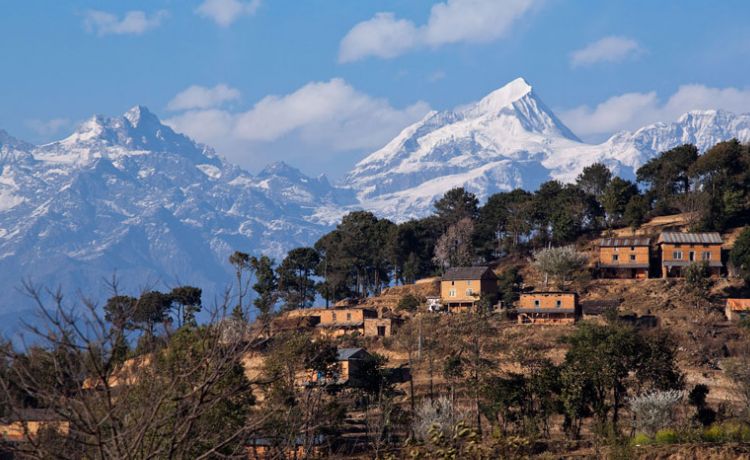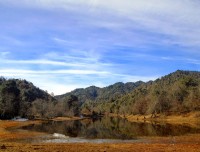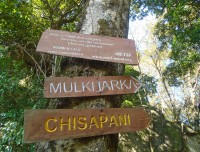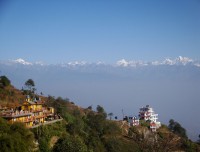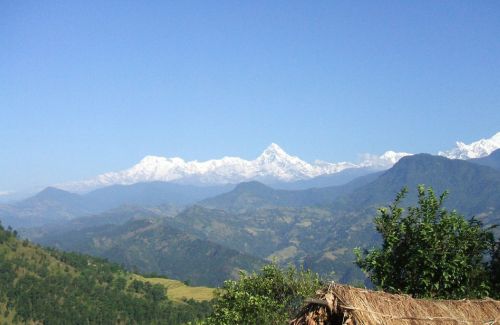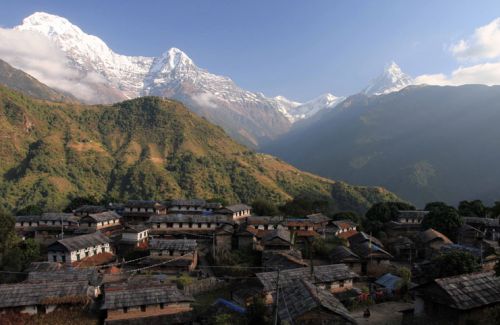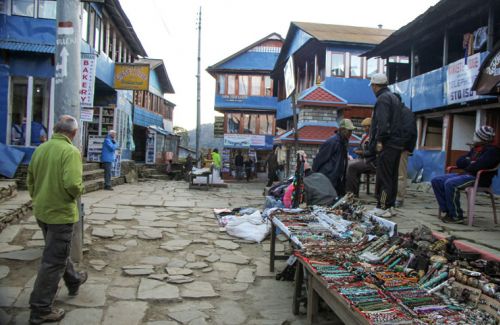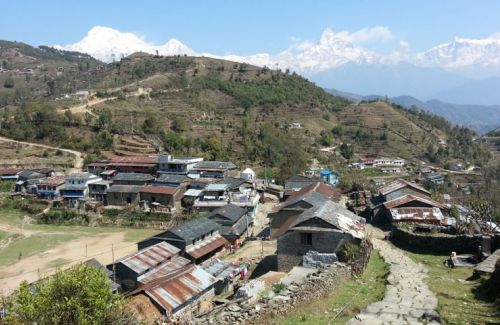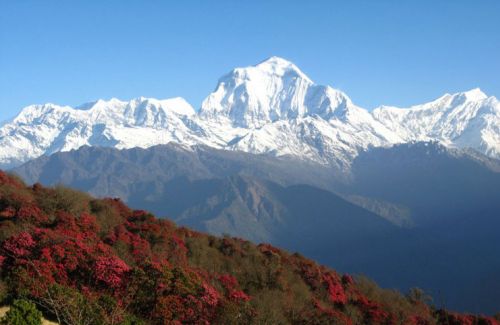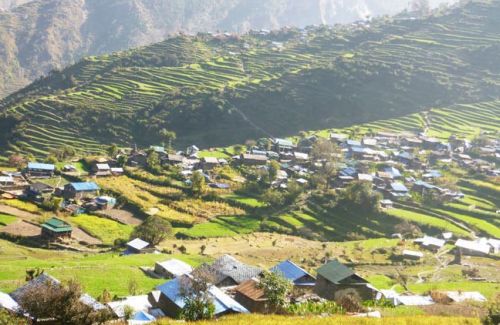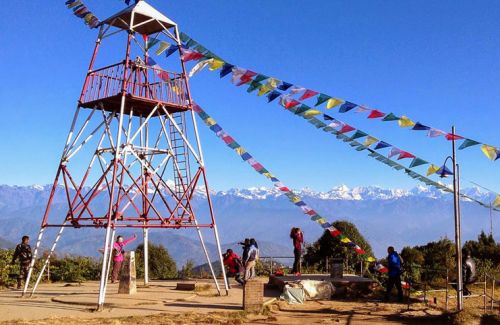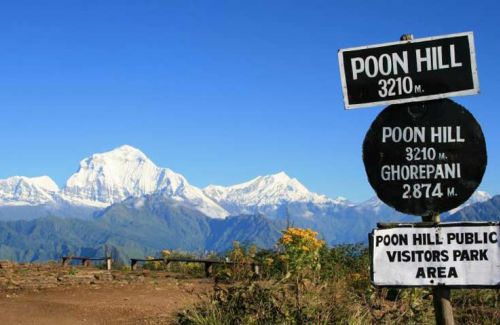Chisapani Nagarkot Trekking
- Duration07 Days
- Max. Altitude2,175 m
- Starts FromUSD 565
Destination:Nepal
Trip Grade:Easy/Mild (*)
Meals:Breakfast
Transportation:Private Vehicle
Accommodation:Lodge
Starting from:Sundarijal
Show All
Chisapani and Nagarkot are two best hiking places for the ideal holiday where we can feel the true color of nature combining with typical local life. These are the great viewpoint to view mighty Himalayas in 360 degrees. The captivating sunset and the ethereal sunrise from Nagarkot and Chisapani will make us dissolve in the nature.
Chisapani Nagarkot Trekking begins from Sundarijal. This is one of the popular hangout and the busy picnic spot in the north of Kathmandu. Sundarijal, the word itself enough to describe the place Sundari means beautiful and Jal means water, a place from where the water has been supplied to Kathmandu valley. It has water reservoir and beautiful waterfalls, cool shades and serene atmosphere, amazingly peaceful area.
After passing few settlements, we hike to the forest to Chisapani and stay overthere. Chisapani Nagarkot trek reaches to a mixed settlement of Brahmins, Gurungs and Sherpas.Trek Chisapani Nagarkot provides the lush green forest where the birds of many species are found chirping, the wild animals are found playing hide and seek. The rich countryside well set in the terraced land seems truly matching on the natural background. This is also the place from where we can view the large section of the Himalayan ranges. Finally, we can either choose a side trip from Nagarkot or we can drive back to Kathmandu.
Trip Highlights
- Sightseeing at World Heritage Sites in Kathmandu
- Drive from Kathmandu to Sundarijal
- Walk through Shivapuri National Park
- Enjoy the jungle walking with bird watching
- View sunrise, sunset from Chisapani, Nagarkot and Dhulikhel
- Great scenic beauty from the view point at Nagarkot
- Panoramic views of Langtang and Ganesh Himal
- Interact with the local people and know about their culture
Day to Day Itinerary
Day 01:Arrival in Kathmandu (1,350 m) and Transfer to the Hotel. Overnight at Hotel
Day 02:Pre-trip Meeting and Sightseeing around Kathmandu Valley. Overnight at Hotel
Day 03:Drive from Kathmandu to Sundarijal and trek to Chisapani (2,050 m), 5 hrs. Overnight at Guesthouse
Day 04:Trek from Chisapani to Nagarkot (2,175 m), 7 hrs. Overnight at Hotel
Day 05:Trek from Nagarkot to Dhulikhel Bazaar (1,440 m), 6 hrs. Overnight at Guesthouse
Day 06:Drive back from Dhulikhel to Kathmandu, 1 and half hrs. Overnight at Hotel
Day 07:Transfer to the International Airport
Cost Include
- Airport picks up and drops off by tourist vehicle
- A full day sightseeing in Heritage sites in Kathmandu with private tourist vehicle
- A government licensed holder guide for sightseeing
- 3 nights in Kathmandu,2-3 star category hotel in twin sharing basis with Breakfast
- Lodges, Guest Houses basis accommodation during the trek
- Drive from Kathmandu - Sundarijal and Dhulikhel to Kathmandu
- An experienced English-speaking Trekking Guide
- Shivapuri National Park Entry Fee and TIMS Card for Trekking
-
All government and local taxes, VAT and Service Charge
Cost Exclude
- Lunch and dinner in Kathmandu,Chisapani, Nagarkot, Dhulikhel
- Entrance Fees for the Heritage Sites and other places
- Nepal Entry Visa fee which is issued in Kathmandu Airport
- International airfare to and from Kathmandu
- Your travel insurance
- Personal expenses (phone calls, laundry, bar bills,beverages etc)
- Tips for the trekking staffs, driver
-
Any other cost not mentioned in Cost Includes section
Detail Itinerary
Day 01Arrival in Kathmandu (1,350 m) and Transfer to the Hotel. Overnight at HotelAfter you land at Tribhuvan International Airport, you go through custom formalities and proceed towards the entrance where our representative from Himkala Adventure heartily greets you and transfer to the hotel. Overnight at hotel in Kathmandu
Day 02Pre-trip Meeting and Sightseeing around Kathmandu Valley. Overnight at Hotel After breakfast around 9 am, we set out for the guided city tour in the UNESCO World Heritage Sites. These sites are unique in its arts and architecture, religious and cultural performance. There are number of festivals, jatras celebrated by the local people. The place by itself referred to as “Nepal Proper” by British historians. The Newar people are the indigenous inhabitants of Kathmandu Valley and the influence of their great work reflects in the wooden work after the Malla period from 17th Century. You could interact with the local people and witness their daily life activities. After city tour, we return back to the hotel, prepare for the trek and give you briefing about Chisapani to Nagarkot trek. Overnight at hotel in Kathmandu
Day 03Drive from Kathmandu to Sundarijal and trek to Chisapani (2,050 m), 5 hrs. Overnight at Guesthouse It is about 17 km northeast from Kathmandu city. It takes about 45 minutes to reach to Sundarijal by vehicle. We begin our hike following the steps up to the Suandarijal water reservoir through the water pipe line in a side. The eye catching view of waterfalls, rock formations, big stone boulder and the forest along with the chirping sound of birds.Then after entering the Shivapuri National Park , we cross the small bridge of Water Dam, the water supply to the valley dwellers from here and climb up , pass through the forest and reach to MulKharka village. Finaly after 5 hours walk, with majestic Mountain View from east to the west in a clear day, we reach to Chisapani. Overnight at guest house in Chisapani
Day 04Trek from Chisapani to Nagarkot (2,175 m), 7 hrs. Overnight at Hotel After breakfast, we walk gently through the flat land for 3 hours then we descend down to Chowki Bhanjyang which takes about 2 hours from Chisapani. We can take our lunch there. After lunch, we walk through the plain trail about one and half hours and climb up to the Nagarkot, takes about 30 minutes to reach to our destination for today. Nagarkot is 32 km east from Kathmandu, the popular hill retreat, for one night stand. There are nice hotels, lodges and guest houses. Overnight at hotel in Nagarkot
Day 05Trek from Nagarkot to Dhulikhel Bazaar (1,440 m), 6 hrs. Overnight at Guesthouse We wake up early in the morning. We can see the series of mountain stretching from Dhaulagiri to Kanchenjungha in the clear day which is about 300 km of ranges. These mountains can be viewed from the balcony of the hotels situated in the Nagarkot. If you would like to go to the tower, it is about 5 km from the hotels area and takes about 20 minutes to reach there. After breakfast, we descend down to Dhulikhel through rhododendron forest and villages. It takes about 6 hours from Nagarkot. Dhulikhel is situated at an elevation of 1440 m, is the old city having its glorious history and trade Bhagawati temple in the west are worth visiting. The sunrise, sun set and the view of nearest hills with terraces and the Himalayan ranges are incredible. Overnight stay at hotel in Dhulikhel
Day 06Drive back from Dhulikhel to Kathmandu, 1 and half hrs. Overnight at Hotel After viewing sun rise, we return back to hotel for the breakfast. Then walk around the villages, explore the brick paved streets and drive back to Kathmandu. It is about 32 km from Dhulikhel to Kathmandu but it is because of the smooth road, we arrive at Kathmandu within one and half hours if there is no traffic jam on the way. If you would like to visit Bhaktapur Durbar Square, we can turn right from Jagat through Chamasimha and begin our day tour through Dattatraya Square, if not we directly go to the hotel and do check in. After a while, you could visit the local market and do shopping. Overnight at hotel in Kathmandu
Day 07Transfer to the International Airport Your short trek starting from Sundarijal to Chisapani and Nagarkot via Dhulikhel ends today with mild hiking and visiting the countryside. We depart you in the Tribhuvan International Airport, 3 hours before your scheduled flight. With our sincere gratitude, we say you bye leaving you in the entrance of the departure section and wish you have safe journey towards next destination. Namaste!!!
Trip FAQ
Himkala Adventure would like to answer all the queries about Chisapani Nagarkot Trekking for all curious travelers/trekkers in the world. As you are entirely from different geographical location, you could better to know everything about the treks from the beginning i.e. airport pick up till your departure like airport picks up, drops off, accommodation in city, in the trek, guide and porters, safety for the trekking, food and accommodation and some other things that you might face on the way. Hope our endeavor listing these questions answers will help you self informed.
This is simply the outlines of the services we offer but it may differ as per your requirement, number of trekkers. What we go through our conversation, we will manage the means of transportation, hotels in the city, accommodation in the trekking, numbers of porters etc. This is general idea about Chisapani Nagarkot Trekking before your trip and you become clearer about the trek. Please feel free to contact us to get more information about the trekking in the Himalayas of Nepal.
1) What physical fitness do I need to book this trip?
Every trekking in the Himalayas of Nepal requires the certain level of physical and mental fitness. So, we advise you to be in good physical shape and able to feel comfortable while hiking up and down 7 to 12 miles per day on a trail carrying a day pack of about 10 pounds. Three things could make you confident enough for any trek you would like to do: aerobic, strength and mental.
Aerobic conditioning is important primarily because you will be trekking in thinner air, up to 40% less than at sea level. With good aerobic conditioning, you will be able to better metabolize whatever oxygen is available to you. You should plan on doing at least one hour of aerobic 3 /4 times per week for 1 month or more before your arrival in Nepal. Walking, jogging, cycling, hiking on valley floor to ridge line ascents with day back are some of the excellent forms of exercise, so long as you are strengthening leg muscles and building stamina. Speed is not the essence; stamina, confidence and continuity are. Do as much uphill as possible. If you live in flat area, go to the stadium and use the steps with your pack.
2) Do I really need to use guide to Chisapani Nagarkot Trekking?
You are advised to use Guide so that you could feel safer in the unknown area because the guide can tell you the possible danger as they have guided in this region since long. Most importantly, the Himalayan weather is really unpredictable and the Guide can help you to take proper shelter. Nest advantage to be with Guide is you get more knowledge about local culture and you could have easy access to interact with the local people. In 2014, the Nepal Government clearly has stated that the trekkers should have a guide but still it is not seemed in the practicality.
3) How do I find Himkala Adventure for my pick up at the airport?
Our representative from Himkala Adventure will display a small board (placard) of company or your name outside the airport terminal. You will be driven to the hotel by our tourist vehicle.
4) What sort of accommodation do I get in Kathmandu?
Normally we provide standard rooms with twin sharing accommodations at three star or similar category hotels in Kathmandu including breakfast. Accommodation in these cities can be upgraded as per your request. But some of our packages are sold without accommodation in the city.
5) How are tea house facilities during Chisapani Nagarkot Trekking?
Tea House is the combination of guest house, restaurant, and social hang out. Tea houses in Chisapani Nagarkot Trekking area are professional, well managed and with neat and clean lodging offering fine views and plain but fresh and hygienic food with friendly atmosphere Most of the Tea Houses have running water facility. Many of them have hot water available for bathing.
6) What sort of accommodation do I get in trekking?
Guesthouses/Tea Houses/Lodges provide twin sharing single and double rooms and occasionally a dormitory which is basically clean with a mattress and a quilt or blanket. Our company provides the sleeping bag if needed but we always recommend having your own sleeping equipments. You have to share the room with your group member or sometimes with unknown traveler. The toilet is always outside the room with basic facilities.
7) What sort of foods, water and drinks can I expect in trekking?
We can order the foods as per in the menu.There are mostly the family members themselves to cook and serve the meal. They are simply trained but experienced because they have been offering such services for many years in this busy route. The food is hygienic, fresh and delicious. We recommend you to drink mineral water or the boiled or using water purification pills or drops.
Most of the foods are cooked in the kitchen of tea houses. They serve you with different varieties of delicious Nepali and continental dishes. The most popular Nepali food is daal bhat (rice and lentils) with some mixed vegetable curry. Garlic soup is popular as it helps you with acclimatization. You could better be vegetarian in the mountains. All hotels in cities and guesthouses in trekking serve the vegetarian food. You can find all common types of drinks like hot chocolates, coffee, tea, hot lemon with honey, ginger tea, soft drinks etc. you will have your breakfast and dinner at the lodges where you will be staying and lunch somewhere on the way to your next destination.
8) What mode of transportation do I use?
We will provide the private transportation for Airport/Hotel/Airport pick up and drop and sightseeing in Kathmandu Valley. We use transportation as based on our cost inclusion section. The transportation varies depending on your requirements at the time of booking the trip.
9) What is the best season for this trekking?
The best season for Chisapani Nagarkot Trekking is spring (March to May) and autumn (September to December). These are the perfect time of the year for the breathtaking views of Himalayas with clear and sunny days. But the weather in the mountains is unpredictable.
10) What is the weather and temperature like during the trekking?
The climate in Nepal varies from place to place which can be categorized in different four main seasons. The main seasons in Nepal are spring (March to May), summer (June to August), autumn (September to November) & winter (December to February). The best season to travel in Nepal is autumn (September, October & November) & spring (March, April & May). Weather in the mountains is unpredictable. But the day temperature in Chisapani Nagarkot Trekking is comfortable.
11) Who will be guiding me during this trip?
We provide the professional government license holder English speaking trekking guides for our entire trekking trip. We can also provide French, Spanish, Japanese, German or Italian speaking guides as per your preference with extra payment but not guaranteed. All guides will be Nepali people who are carefully selected on the basis of their appropriate experience, leadership skills and personality. They are all trained from Nepal Academy of Tourism and Hotel Management, certified and approved by the Tourism Department of Nepal government. We provide a different city tour guide to guide you in UNESCO World Heritage Sites in Kathmandu. They are the professional license holder guide specialized in culture, history, geography, iconography, archeology and religion with good command over English. Tour guides are specialized in city tour and trekking guides are more in the hiking and trekking in the Himalayas.
12) What sort of experience do your guides have?
Our entire city tour guides have bachelors to Master Degree academic education along with many months tour guiding training from Nepal Academy of Tourism and Hotel Management, Rabi Bhawan, Kathmandu, Nepal. They are fluent in spoken languages and informative about the sites in many aspects. They are quite experienced and dedicated to their job and responsibilities.
Our entire trekking guides have minimum Intermediate to Master Degree academic education with trekking guide training from Nepal Academy of Tourism and Hotel Management, Rabi Bhawan, Kathmandu, Nepal. Many of them are from villages. As they are local, they know more about the routes, necessary precaution to be taken and so on. They have spent many years exploring many parts of the country. They are trained in first aid and able to handle any situation easily. They speak good English and make you know about the places you visit.
13) May I charge my electronic devices during Chisapani Nagarkot Trekking?
Most of the places in your tea houses have charging facilities. You can charge your devices by paying some extra money. It’s good if you bring TWO or THREE pin travel adapter and put your gadgets at warm place at night.
14) How much additional money is required for this trip?
It’s a very personal question as expenses depend on habit. Normally, in Kathmandu you can allocate about USD 10 to 15 per person per lunch or dinner. USD 10 to USD 15 per person per day will be sufficient to buy bottles of water, chocolates, pay for a hot shower during the trekking. Other personal expenses will be your own calculation.
15) What is the social and environmental responsibility of Himkala Adventure for this trip?
The situation of environment in Nepal is in considerable stage due to so many factors caused by global warming, human activities, and adverse effects of natural incidents. Nepal is in between two giant countries like China and Nepal. The ozone layer is depleting and the atmosphere is getting heated. So, its direct effect is to the Himalayas that the snow is melting day by day and the sea level is rising. It is due to population growth, people are clearing the forest and the soil is being eroded. As a part of society, and our trekking related activities are directly concerned with the social and environmental things. We are very conscious not litter in the open spaces, to manage garbage properly and make local people aware in this campaign. We are working together with other companies and taking these issues seriously.
16) What is the minimum number requirement for this trip?
We operate individual trip to the group joining trips for Chisapani Nagarkot Trekking. If you want to do any private trip we are ready to organize for solo traveler as well with some additional charges.
17) Are there communication or internet services during Chisapani Nagarkot Trekking?
All guesthouses/Lodges have WiFi facilities on the Chisapani Nagarkot Trekking. All our guides carry the local mobile phone. You can use his mobile phone to make any local or international call from trekking trails by paying him directly. You can even pass him number to be connected with your family or friends. We highly recommend taking local SIM card for call and internet services during trekking. Local SIM cards are easily available in many stores and at airport as well. You need to provide two copies of your photographs and your passport copy to get local SIM CARDS of NCELL & NTC (only these two companies provide telephone services in Nepal.
18) May I get chances for shower during Chisapani Nagarkot Trekking?
The guesthouses on the way to Chisapani Nagarkot trekking can provide hot shower. If the day is cloudy and solar panels are not working, occasionally, there may be problem, otherwise, there is no problem for the hot shower.
19) May I add extra days in trekking?
Yes. You can customize the trek as you would want. We are flexible while preparing the itinerary and you could lengthen or shorten it as per your requirement.
20) What happens in case of emergency?
Himkala Adventure has prepared for any emergency situation and knows how to handle it. Our guides are trained in first aid and can deal with most of the basic ailments that occur during the trek. Every client should have his own insurance before coming to Nepal for the case of emergency.
21) Do I need to have insurance for this trip?
We request you to have a travel-insurance policy to cover theft, loss, medical problem & emergency helicopter evacuation from high altitude places before coming Nepal. Choose a policy to cover your emergency high altitude helicopter evacuation with all medical insurances for trekking in high altitude in the Himalayas of Nepal. Your travel insurance is always needed before going in any high altitude trekking. Please check your travel insurance policy which doesn’t exclude mountaineering or alpinism. Although you will not be engaging in these activities in your trekking, you might have problem convincing the insurance company of this fact. Rescue insurance need to cover an emergency helicopter evacuation or a charted flight from remote mountain trails of Nepal as well as international medical evacuation. A helicopter evacuation might cost US$ 2500 to US$10000 depending on the places. So that travel insurance to cover all above is must to travel in the high Himalayas of Nepal.
22) What type of shoes should I wear during Chisapani Nagarkot Trekking?
You could better have comfortable tennis shoes or snickers for the Chisapani Nagarkot Trekking. Shoes and boots are best to buy before arriving in Nepal. We advise you to wear your new shoes for sometime before trek so that you could feel well habituated on the newer trail for your feet.
23) Can I use credit cards in Chisapani Nagarkot Trekking?
No, you can use only in the cities like Kathmandu. So, it is better you to make change in Kathmandu. When you are out of city, all you need is cash, better to have small notes. Please change the currency in local Nepali rupees before you go to the mountains.
24) Do I need to tip my guide and porter? How much would that be?
Tipping is not mandatory, neither it is right to ask by anyone but it is a way of showing gratitude after taking service. The level of tip also shows how satisfy you are from the team that you had been during your tour/trek.However, we recommend you to spend minimum 10% of your total trip cost for tipping entire local staffs, the ratio of tipping guide and porter will be given to you at the pre-trip meeting in Kathmandu before starting the trek.
Trip Note
Cost:
The cost of trip varies according to the number of travelers in the group, the category of the Hotel, mode of the transportation and any kind of changes (if there is). So, if you would let us know all of these above mentioned things, then we could quote you the exact price.
Essential Documents:
You are requested to send the following documents after you confirm or book the trip with Himkala Adventure:
A copy of your passport and travel/health insurance documents with contact details, three passport size photos.
It is advised to maintain a separate photocopy of all important documents including traveler’s cheques, bank/ATM card, contact numbers, international flight tickets, and emergency contact numbers.
Weather:
The main trekking season in Nepal is from October to December and March to May but the Chisapani Nagarkot Trekking can be done throughour the year. As these are the parts of Kathmandu, it has always mild and soothing climate.
Nepal Strikes:
There is much more progress in the political scenario in Nepal and we assure you that travelling in Nepal is safe. But there may be Bandha (wide transport strikes) at a very short notice. The shuttle bus is in operation by Nepal Tourism Board and the Nepal Tourist Police in conjunction with the Himalayan Rescue Association from domestic and international terminal to the various hotels in Kathmandu. The service costs 300 rupees per person.
Itinerary Disclaimer
Himkala has thoughtfully designed all the itineraries but our itineraries are updated for the betterment on the basis of our past travelers’ comments and our own research. In case you find changes in the itinerary you printed and the upgraded one does not affect your trip. Please note that some changes may occur in our itineraries due to bad weather and common seasonal changes to timetables and transport routes.
Physical Rating:
Your trip will be meaningful if you could find yourself fit and fine. You will be walking up to 2,175 m from the sea level. As the geographical region varies, there is a temperature variation as well. So, we advise you to undertake regular physical exercise, jogging, hiking, riding, ascending and descending the long stairs etc.
Group Size:
Himkala Adventure organizes solo to group travelers. Our group trips are designed for sharing accommodation and there is no single supplement. Single travelers share with the same gender from twin to multi-share in an accommodation. You are requested to have mutual understanding in between the fellow travelers who have joined from the different parts of the world. Please remember that you have great responsibilities in the group. If you are requested to be at a particular place at a certain time, make sure that you have been there at a time. It is much more pleasing sharing experiences and traveling together.
Accommodation and Meals:
Accommodation and Foods in the Chisapani Nagarkot are good as we can get many hotels, lodges on the way. There are nice hotels from budgeted to delux in Nagarkot.Foods also typical Nepalese dishes to continental and other varities can be ordered. There is no problem of hot shower and electricity.
Money Matters:
Please note that most establishments in Asia will not accept foreign currency notes that are old, torn or faded and they can be very difficult to exchange or extra fees added when exchanging at banks. Please ensure that you have new, clean notes.
The official currency of Nepal is the Nepali Rupee (NPR). ATMs can be found only in major cities of Nepal like Kathmandu, Pokhara, Chitwan, Bhaktapur etc. The government of Nepal has banned the import, export and use of 500 and 1000 Indian rupee notes in Nepal. You make sure that you won’t carry these notes upon arrival in Nepal, otherwise they are confiscated and you may be fined.
Please make sure that the foreign currency notes that you have are new and clean notes because old, torn or faded foreign currency notes in Nepal are very difficult to exchange or extra fees added when exchanging at banks.
While travelers cheques have security advantages exchanging them can be a lengthy process, commissions can be high (up to 10%) and they can be difficult to change in rural areas, on weekends and public holidays. If you choose to bring travelers’ cheques, make sure they are a major brand and major currency.
Tipping:
Tipping is not mandatory. It is not anyone’s right asking for tips but if you are happy with the service, you could tip the staffs. It is entirely a personal preference. Tipping could be significant to them who took take great care of you in your traveling period. Himkala recommends that you could tip any intended recipient by any member of the group than collected and passed on by the group leader.
Note: Please do not tip with coins or dirty and ripped notes. This is culturally taken as an insult.
Local Dress in Nepal:
Nudity is a sensitive issue in Nepal. Women should avoid wearing shorts and sleeveless tops in public places where this might be seen as inappropriate. Remove shoes before entering certain holy places. Non-Hindus are not permitted in some temples.
Feedback:
Your feedback will be the great guidance to meet our target and to bring improvement in our service. What and how have you experienced with Himkala Adventure and our staff? Please write, we will read it carefully. One cannot see his/her shortcomings that are lying with them. Someone should point it out. We are always eager to hear from you.
